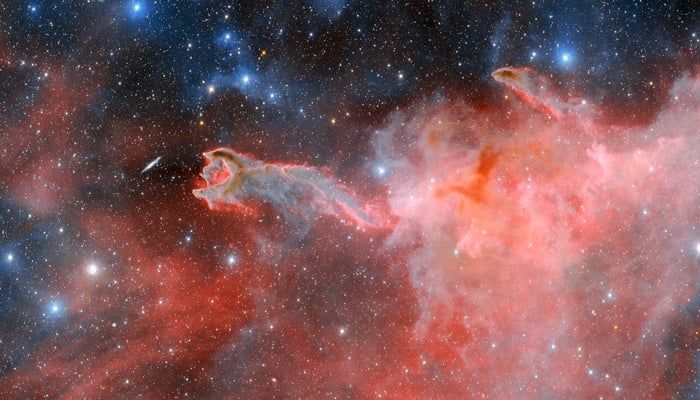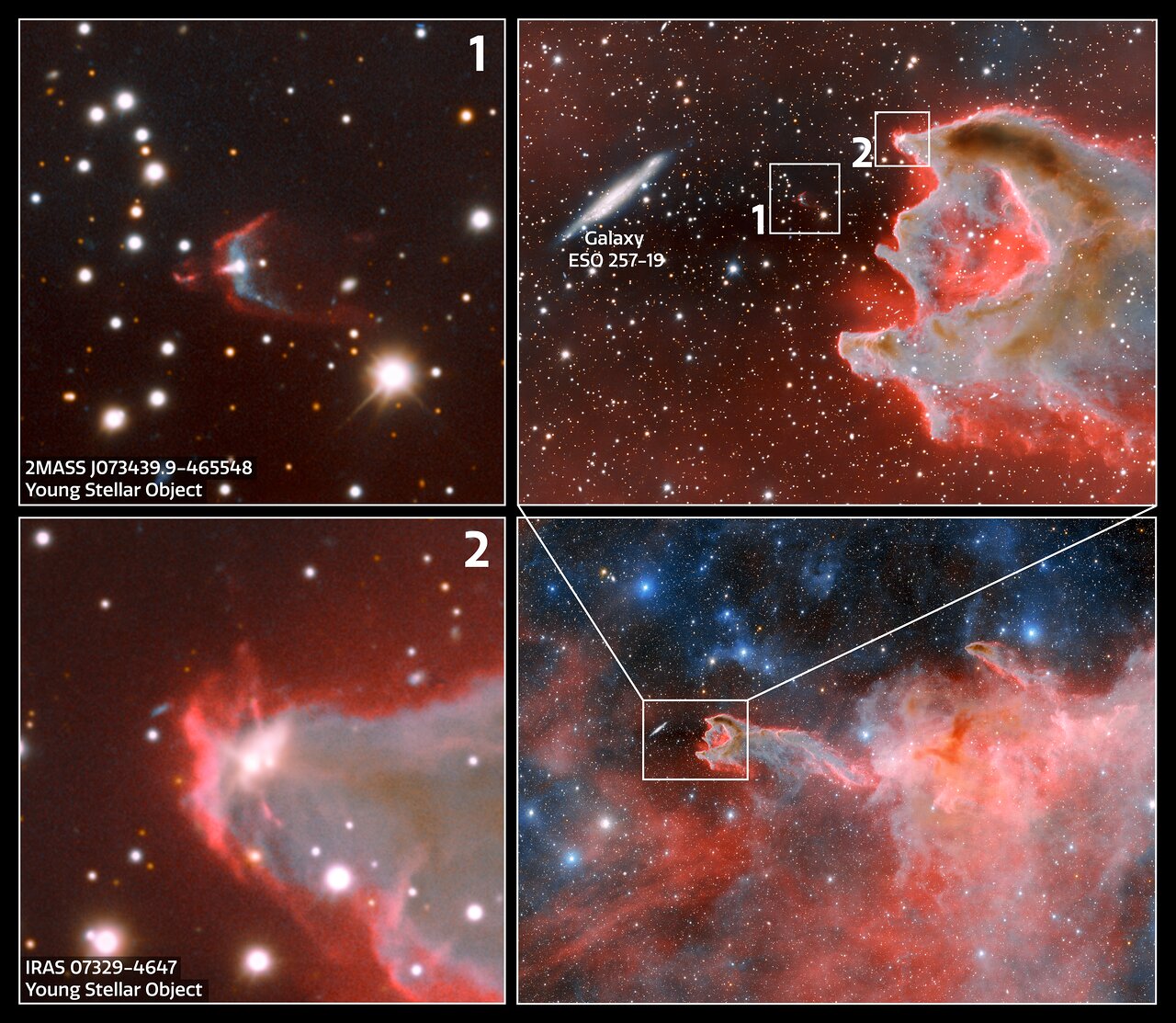Remarkable: Cosmic hand CG 4 revealed from 1,300 light years
NSF NOIRLab shows how cosmic hand looks like from real space example
May 08, 2024

New remarkable pictures released this week gave a mesmerising look into the celestial activity taking place around 1,300 light years away from our solar system showing a hand of gas and dust.
The pictures were from the constellation of Puppis in which the clouds of gas and dust are taking the shape of a hand and stretching toward spiral galaxy ESO 257-19 (PGC 21338).
The experts named the structure CG 4 and called it a cometary globule, as per the press release from the US National Science Foundation National Optical-Infrared Astronomy Research Laboratory (NSF NOIRLab).
The structure is not near any galaxy but has aligned with the hand by chance.

The statement also read: "Cometary globules are a subclass of the dark nebulae known as Bok globules — isolated clouds of dense cosmic gas and dust surrounded by hot, ionised material."
When these clouds exhibit stripping of material that results in an extended tail, they are referred to as cometary globules because of their vague resemblance to a comet, though they have nothing in common, as per the Lab.
In these areas, stars are often formed mostly of hydrogen, carbon oxides, and helium.
The hand is around 1.5 light-years in diameter, with an 8 light-year-long tail, but such objects get specific shape remains unclear.









